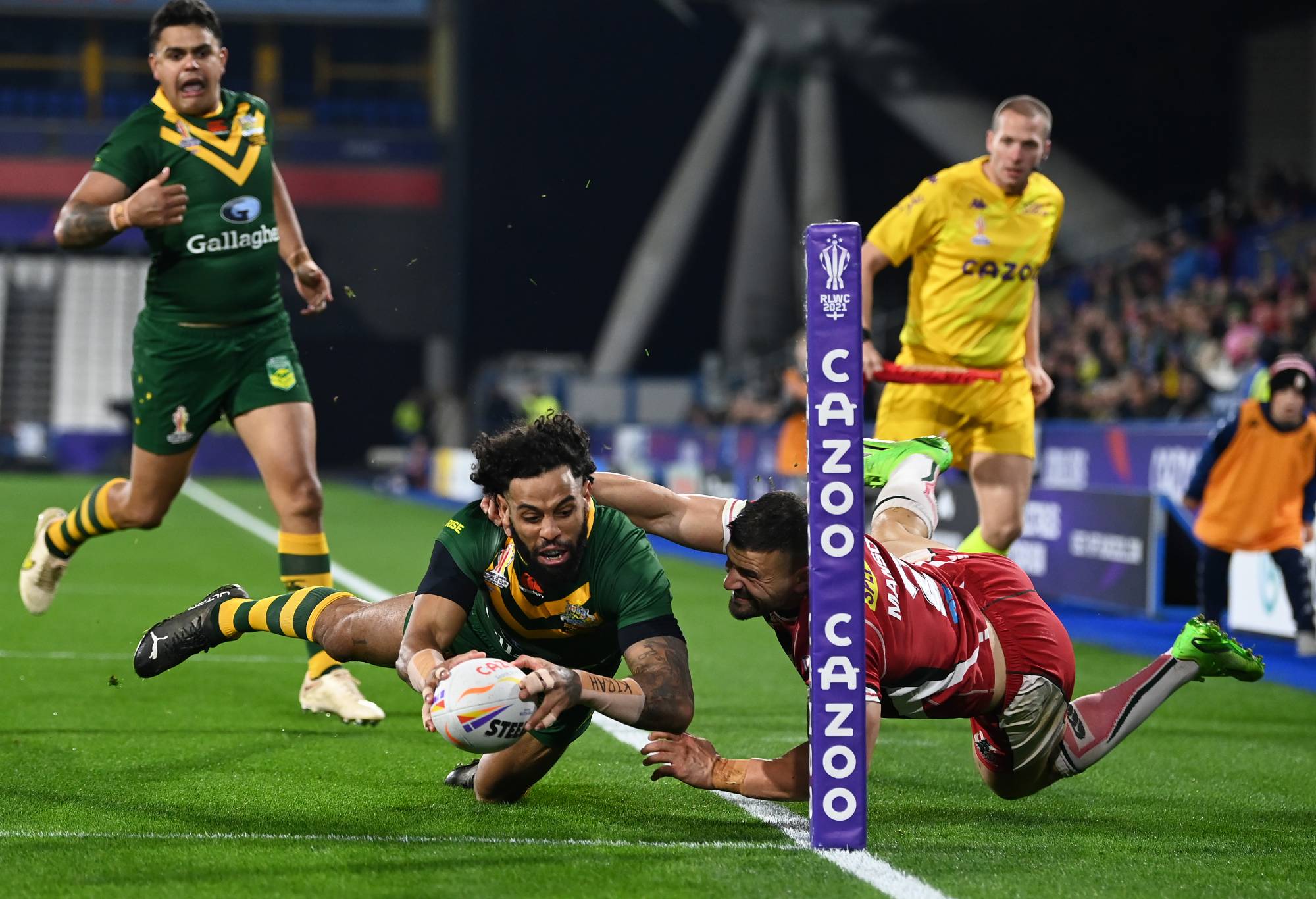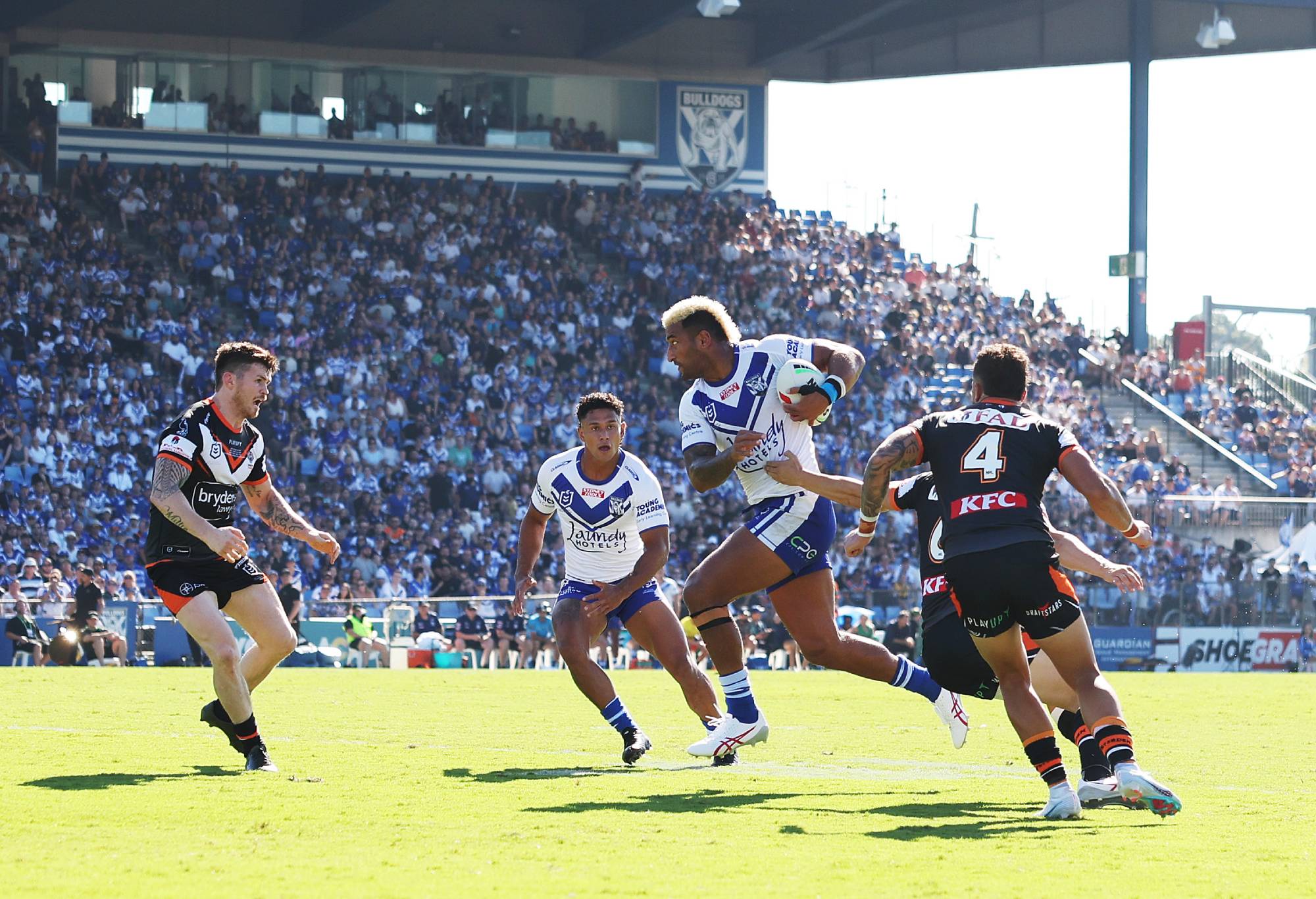With three rounds in the bank, this is already shaping up to be one of the most exciting years in the quarter century of the NRL. We’ve had more close finishes and boilovers than anyone expected, with plenty of points on show too.
Fans have responded too, with huge ratings on the TV and multiple sellouts in the stadiums. What the NRL is selling, punters are buying.
The dream of Driver Avenue for years has been an equal, fast-paced, high-scoring competition, and they seem to have got it.
Teams have won by an average of only 8.58 points across three rounds to start 2023, down from 8.75 for the same period last season.
Of the 24 games played thus far, 12 have been decided by a converted try or less and 18 by 12 points or fewer. The largest winning margin has been only 25 points – one of only two games decided by 20 or more points.
It’s surprising, because many thought that this year’s edition would stray from that mould given the entrenched superiority of certain well-organised clubs and the equally entrenched rubbishness of others.
On top of that, the talent pool was diluted thanks to the entry of the Dolphins, which was set to prove yet further that the gap between best and worst is only increasing.
And yet – the comp is even, the points are flowing and nobody is complaining about the standard of footy on display.
Nobody griping is a strange old place to be in the NRL. It begs the question: why has the 2023 NRL season been so weird?
Is it the Rugby League World Cup hangover?
The first factor started last year, with the 2021 World Cup. Every team had players at the World Cup, but they certainly were not spread evenly: some had far more than others.
Furthermore, some had players go far deeper into the tournament than others, too, which in turn cuts into availability for preseason and thus fitness in the early rounds.
The Panthers had nine players go to the semi-finals across Australia, Samoa, New Zealand and England lost the World Club Challenge and then their opening game of 2023 against five for St Helens and three for Brisbane.
It’s a huge factor in the way that the reigning champions have begun their season.

(Photo by Gareth Copley/Getty Images)
Parramatta had seven in the semis, so did Canberra, while the Storm had six and the Cowboys five. Parra are 0-3 and the other three are 1-2 to start the year despite making the finals in 2022.
For what it’s worth, the biggest contingent of UK talent was from Saints, who are 2-2 in the Super League, and enduring a slow start to the year domestically despite winning the World Club Challenge in Penrith.
At the other end of the NRL table, the Dolphins had four World Cup semifinalists, while the Broncos, Warriors and Manly had three and the Titans just two. It matters.
This isn’t new. After the last World Cup, held in 2017, saw the 2018 season start with the top four from the previous year struggle.
The premiers, Melbourne provided eight semi-finalists and began poorly and the Roosters, who were second in 2017, did eventually kick into gear and win the Premiership but were 4-4 early on.
Back then, it was off a World Cup that had been held in Australia, in which England had made the final with a sprinkling of NRL talent. Last year, it was in the UK, increasing the time taken to acclimatise on return.
Of course, this is a virtuous circle: playing more internationals, in a roundabout way, has increased the entertainment value of the NRL the year after.
And remember, despite the Storm and Roosters being poor to start 2018, they still played the Grand Final that year. Things worked themselves out in the end.

Hamiso Tabuai-Fidow celebrates scoring with a phins up Dolphins salute. (Photo by Bradley Kanaris/Getty Images)
Is it the Dolphins?
The new side were expected to dilute the competition, and while that might be true in the long term, it certainly hasn’t diluted it for them. It’s everyone else that might be missing out.
One of the functions of the 17th team is that every other side has had to readjust their staff, with the extra 30 roster spots provoking a chain reaction of transfer activity.
Redcliffe took a whole heap of established NRL players, which meant that the other clubs have had to backfill those places with less established talent, decreasing both their cohesion and their overall talent levels.
The Cowboys, for example, lost Hamiso Tabuai-Fidow, only for their starting fullback to get suspended, meaning they fielded a raw rookie in Tom Chester on the weekend.
Melbourne could really do with a Bromwich or two at the in their pack and Souths would have killed for Mark Nicholls on Friday night. Ray Stone would be starting for Parra at the moment.
The Dolphins’ recruitment strategy of getting veterans on short contracts has punched holes in the set-and-forget characters who are the glue of plenty of NRL clubs.
It was totally sensible for clubs to let their older players leave, totally sensible for the Dolphins to recruit that way and, indeed, totally sensible for the players to take the cash on offer now. But in the early rounds, it’s had a strange effect that stems from the places that those veterans left at other clubs.
The obvious choice for the 16 other teams was to promote from within, but inherent in that is inexperience and thus instability. Some of that talent will sink and most of it will swim, but the adjustment period where they find who that will be is playing out right now.
We’re seeing this in the imbalance between attack and defence. The Dolphins have clearly aimed recruitment at a playing style based on the ‘compete and complete’ model, favouring defensively strong individuals.

Felise Kaufusi takes on the defence in the Dolphins’ win over Canberra. (Photo by Bradley Kanaris/Getty Images)
That’s worked for them and been enough to jag three from three so far, but elsewhere, it’s introduced a load of new guys to the league. Needless to say, attacking comes easier to rookies than defending.
We’re not seeing blowouts, but we are seeing high scores: this weekend past had six of the 16 clubs score 30 points and all but three teams scored 20 points. There was a 38-34, a 34-30 and a 38-20, plus a 26-22 between the Bulldogs and Tigers which could have been twice that. Six of the eight games covered the bookies’ points line.
Normally, the year starts with lower than average scoring as teams make errors and grow into their combinations, but that hasn’t happened in 2023.
Defence has got worse, and that might have a lot to do with the number of newer players, which in turn is a product of talent dilution.
Like the World Cup hangover, it will likely improve as the year goes on – but so will attack. It might just be that it no longer plays in the Dolphins’ favour like we are seeing right now.
Is it the weather?
We all love warm weather footy, but this has been ridiculous. Rounds 1-3 have been played, largely, in heatwave conditions and, allied to the usual early-season fatigue issues, that has led to a few unusual results.
Extreme conditions tend to equalise talent disparities, as the weather is another potential source of variance, and variance tends to benefit underdogs.
Where heavy rain will negatively impact scoring as handling becomes more challenging, hot weather often increases it and can turn games into high scoring shootouts.
In those cases, winning heavily favours the more conservative team, or the side that can best get their defensive house in order fastest.

(Photo by Mark Metcalfe/Getty Images)
Completion rate is largely a junk stat, but it does have some utility when a side is lower than 70%, as it is almost impossible to win below that.
Three teams have won with completion rates lower than 73%, and on two of those occasions, the other side has been just as bad, with the Titans’ win over the hapless Tigers the only incidence where a sub-70% rate has been enough.
The importance of completions is particularly exacerbated in hot conditions, where bulk defending will eventually fail. Holding the ball and letting the opposition tire themselves out works.
Again, the Dolphins, who have completed at 77%, 78% and 86% in their three games, are bearing this out.
Not completing sets isn’t usually that big a deal – the bottom three for completion rate in 2022 were three of the best attacking sides in the Roosters, Souths and Sharks – but it will bite a side on the backside on very hot days.
Like our two other points above, it could reasonably be expected to change in the coming weeks as autumn begins to kick in, but for now, it’s been a major factor too.
































































































